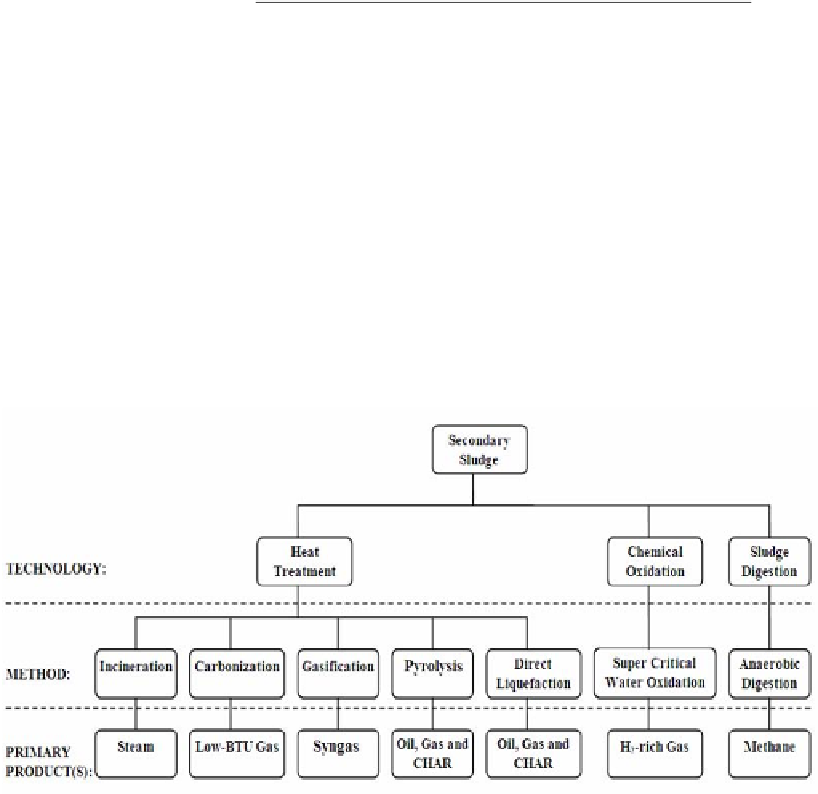Environmental Engineering Reference
In-Depth Information
∑
(HHV
of
the
product)
×
(mass
of
the
product)
Energy Output/Input Ratio =
(1)
(Energy
Input)
The approximate energy efficiency of each process can be estimated by the equation
above, while depending on different requirements and characteristics of each process, the
energy input calculation may differ method to method and may be difficult to determine due
to shortage of experimental data reported.
The objective of this chapter is to provide an overview of different types of post-
treatment methods of secondary sludge, i.e., waste activated sludge (WAS), for energy
recovery. Emphasis is put on the discussion on the energy efficiency for each process, while
advantages and disadvantages of each process are also highlighted. An outline of the many
post-treatment options and their primary energy products can be summarized in Figure 2. A
description of each treatment method including incineration, gasification, pyrolysis, direct
liquefaction, super critical water oxidation and anaerobic digestion follows.
Figure 2. Outline of treatment options of secondary sludge for energy production
2.
S
ECONDARY
S
LUDGE
T
REATMENT
M
ETHODS
Secondary sludge can be treated by employing a variety of post-treatment technologies
such as heat treatment, chemical oxidation and sludge digestion whose processes have been
overviewed recently by Mahmood & Elliot (2006).
2.1. Incineration
Incineration technology is the controlled combustion of waste with the recovery of heat
to produce steam that in turn produces power through steam turbines (Kumar, 2000). A
general flow diagram of the incineration process is depicted in Figure 3. It shows that the
sludge is fed into the boiler, which could be rotary kiln, fixed bed furnace or, common in the


